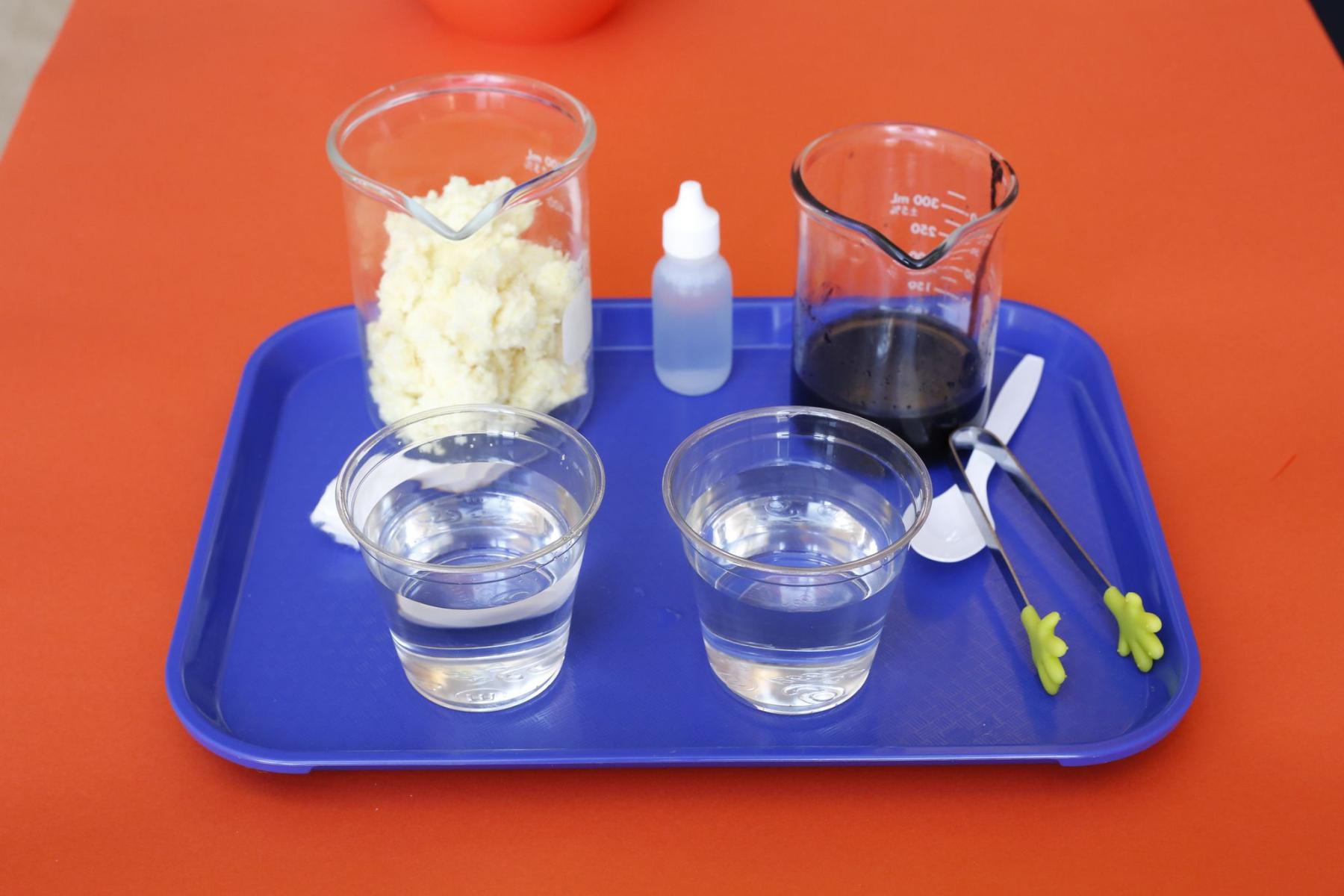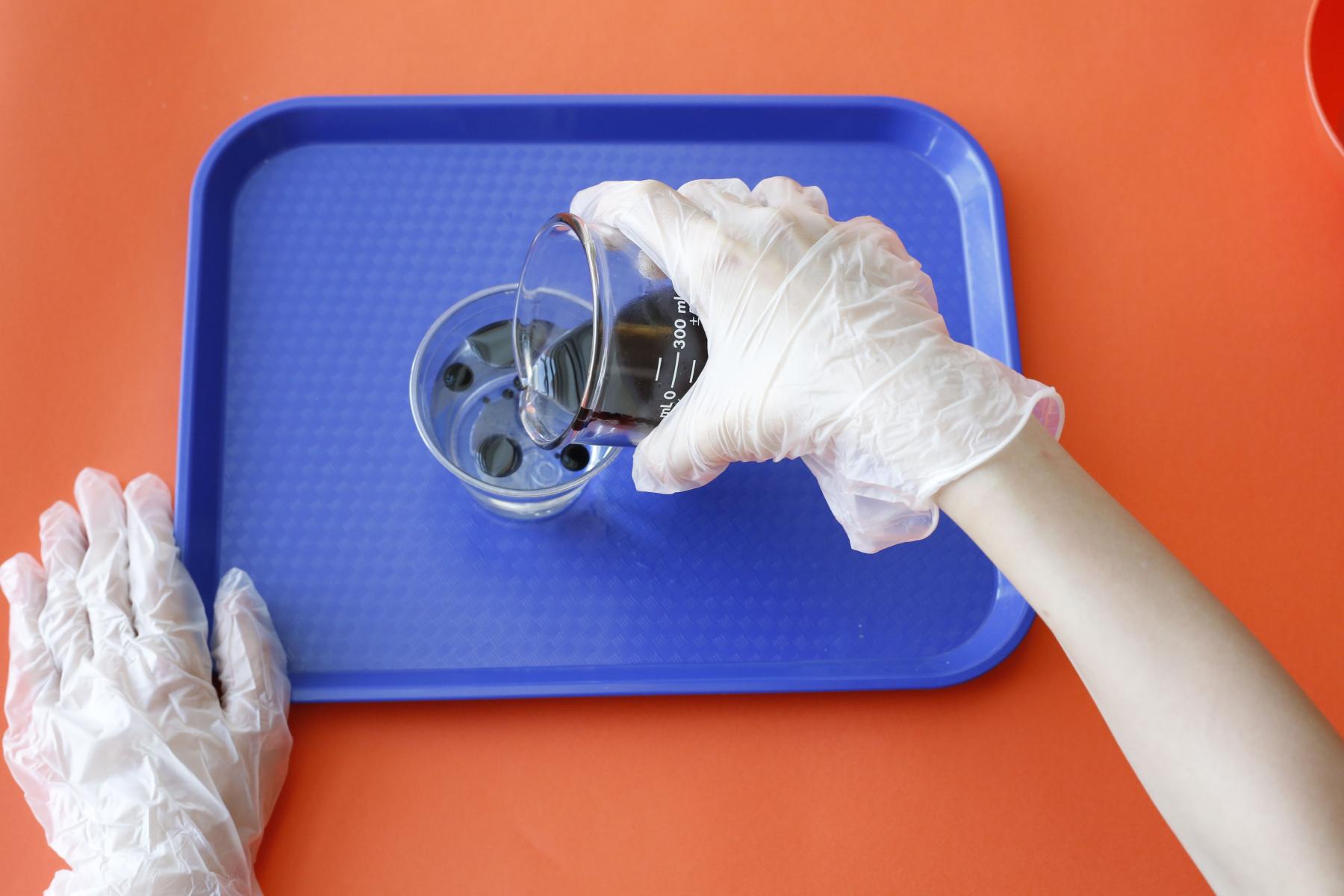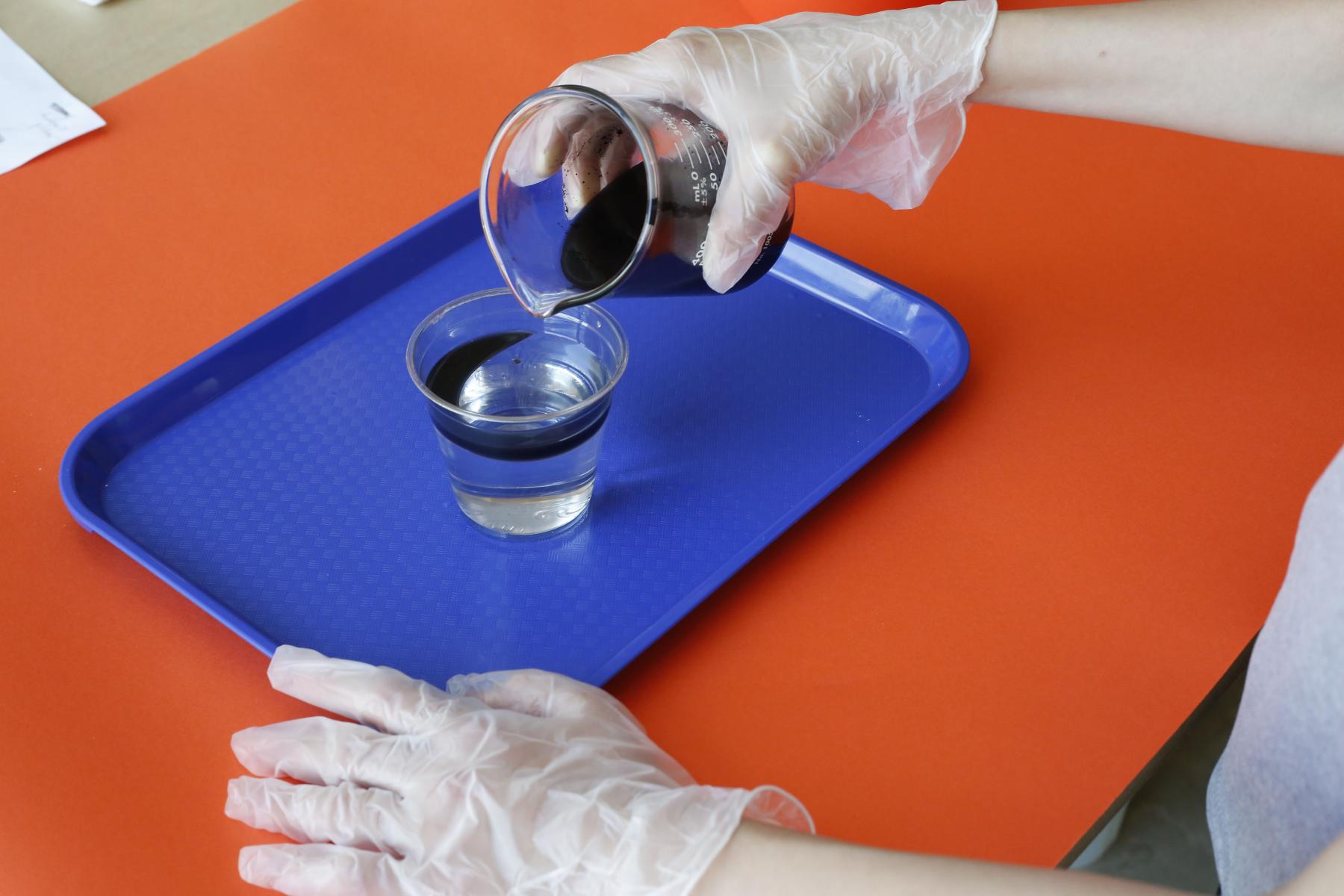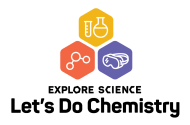DESCRIPTION
"Cleaning Oil Spills with Chemistry" is a longer activity than many of the others in this kit. Participants will learn how different materials interact, and problem-solve to clean up a miniature model "oil spill." Which method (or combination of methods) works best?
DESCRIPTION
"Cleaning Oil Spills with Chemistry" is a longer activity than many of the others in this kit. Participants will learn how different materials interact, and problem-solve to clean up a miniature model "oil spill." Which method (or combination of methods) works best?
TRAINING VIDEOS
OBJECTIVES
BIG IDEA
Chemists use models, tools, and the scientific process to understand our world and to discover and make new things.
Chemistry can help solve challenges and problems in areas like energy, agriculture, health care, and the environment.
LEARNING GOALS
Learners will develop positive attitudes toward learning about chemistry:
- Learners will increase their feelings of interest in chemistry through hands-on exploration.
- Learners will increase their understanding of the relevance of chemistry by exploring the applications of chemistry.
Credits
Developed for the NISE Network with funding from the National Science Foundation under Grant Number DRL 1612482. Any opinions, findings, and conclusions or recommendations expressed in this material are those of the author(s) and do not necessarily reflect the view of the National Science Foundation. Any opinions, findings, and conclusions or recommendations expressed in this product are those of the authors and do not necessarily reflect the views of the Foundation.
Creative Commons Attribution Non-Commercial Share Alike 3.0 United States (CC BY-NC-SA 3.0 US).
View more details

NISE Network products are developed through an iterative collaborative process that includes scientific review, peer review, and visitor evaluation in accordance with an inclusive audiences approach. Products are designed to be easily edited and adapted for different audiences under a Creative Commons Attribution Non-Commercial Share Alike license. To learn more, visit our Development Process page.






